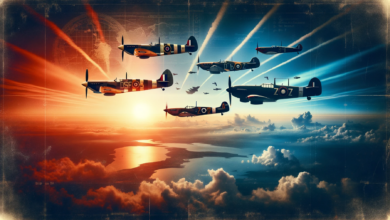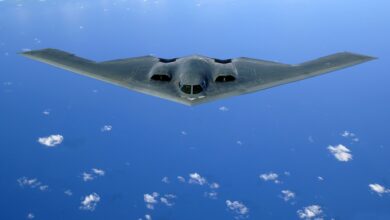Aircraft from the Cold War Era

Today, we’re taking a thrilling journey back in time to explore the incredible aircraft of the Cold War era. This period, spanning from 1947 to 1991, was a time of intense innovation and competition in the skies. Let’s strap in and dive into the fascinating world of Cold War aircraft!
The Dawn of the Jet Age
Breaking the Sound Barrier
The Cold War marked the transition from propeller-driven aircraft to the age of the jet engine. Pioneers like the British Gloster Meteor and the American Bell X-1, which famously broke the sound barrier with Chuck Yeager at the controls, revolutionized aviation. These aircraft set the stage for a new era of speed and performance.
Rivalries in the Sky
The USA and the USSR, the two superpowers, were locked in a technological race, pushing the limits of aircraft design. The American F-86 Sabre and the Soviet MiG-15 are perfect examples of this rivalry, clashing in the skies over Korea. These dogfights marked a significant chapter in aerial combat history.
The Evolution of Bombers
Strategic Bombing
During the Cold War, the concept of strategic bombing took a significant leap. The US B-52 Stratofortress, a long-range bomber, became a symbol of American air power. On the Soviet side, the Tupolev Tu-95, with its distinctive counter-rotating propellers, showcased remarkable endurance and payload capacity.
Nuclear Deterrence
The development of nuclear weapons added a new dimension to bomber design. Aircraft like the B-58 Hustler and the Soviet Tu-22M were capable of delivering nuclear payloads, embodying the doctrine of Mutually Assured Destruction (MAD).
Fighters and Interceptors
Air Superiority
Fighter aircraft saw tremendous advancements in this era. The F-4 Phantom II, a versatile and powerful US jet, demonstrated remarkable adaptability. The Soviet MiG-21, known for its agility, became one of the most produced jet fighters in history.
The Rise of Interceptors
The need to defend vast territories led to the development of interceptors. The American F-106 Delta Dart and the Soviet MiG-25 Foxbat, capable of astonishing speeds, were designed to intercept enemy bombers and reconnaissance aircraft.
Reconnaissance and Spy Planes
Eyes in the Sky
Reconnaissance aircraft played a crucial role during the Cold War. The U-2 spy plane, famously shot down over the USSR in 1960, provided crucial intelligence. Its successor, the SR-71 Blackbird, became the fastest and highest-flying operational manned aircraft in history.
Electronic Warfare
Aircraft like the EC-121 Warning Star and the Soviet Il-20 Coot were equipped with advanced electronics for signals intelligence, adding a new layer to aerial reconnaissance.
The Influence of Cold War Aircraft
Civil Aviation
The advancements in jet technology during the Cold War significantly influenced civil aviation. The development of jetliners like the Boeing 707 and the Soviet Tu-104 transformed commercial air travel, making it faster and more efficient.
Technological Innovations
The era spurred numerous technological innovations. Advancements in aerodynamics, materials science, and avionics from military aircraft research directly benefited civilian aerospace applications.
Conclusion
The Cold War era was a defining period in aviation history. The aircraft developed during this time not only shaped military strategies but also had a lasting impact on the world of aviation. Their legacy continues to inspire and fascinate aviation enthusiasts around the globe.
As we look back, we can appreciate the incredible achievements and the spirit of innovation that drove the development of these remarkable aircraft. The Cold War era, with its iconic planes, remains a fascinating chapter in the story of aviation, a testament to human ingenuity and the unending quest to conquer the skies.
Discover the thrill of the Cold War skies with AirModels’ exquisite collection of Cold War Era Model Aircraft. Whether you’re a seasoned collector or a budding aviation enthusiast, AirModels’ range of high-quality models captures the spirit and innovation of this pivotal era in aviation history.




